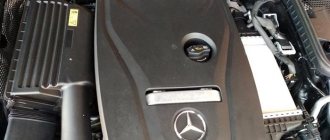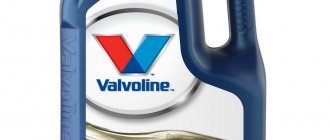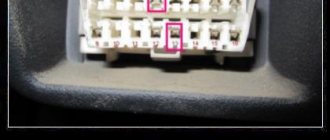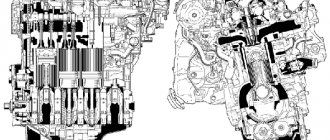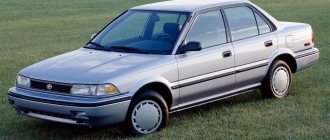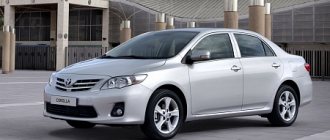Problems and malfunctions
In units of the 1KZ-T series, a typical problem was engine overheating and damage to the cylinder head (cracks appeared). Characteristic symptoms are overheating and rough running of the engine. Theoretically, the head can be welded, but such a solution is short-term.
The original head is destructive for the wallet (128,000 rubles). It is better to use a substitute from AMC (52,000 rubles). There are quite a lot of counterfeit Chinese-made parts on the market that are not trustworthy.
KZ engines have many elements driven by gears. One of the mechanic’s mistakes is removing the central gear without first fixing it. The gear falls apart because it consists of several parts.
In a certain batch of engines, there was a problem with the balance shaft liners.
KZ-TE is characterized by damage to the oil supply tube to the turbine, through which engine oil leaked.
Application:
— Toyota Land Cruiser 70;
— Toyota Prado 90 (Land Cruiser 90);
— Toyota 4Runner (N130 and N180);
— Toyota Hilux V-VI.
1.6-2.0 ZR is an excellent choice!
The ZR family is represented by three blocks - volumes 1.6, 1.8 and 2.0. They are made of aluminum (the mass of the block and head 1.8 is 97 kg), have two camshafts and a timing chain drive.
Their high quality is evidenced by the fact that from the moment of introduction to the present day (they have been offered for more than 10 years) practically no changes have been made. The only improvement is the Valvematic valve control system (since 2008). It allows you to adjust the valve stroke in the range from 1 to 11 mm, which ensures smoother operation and fuel economy at low speeds.
Another proof of durability is the relatively low cost of contract units with low mileage. This means there is virtually no demand for them.
ZR series engines are among the least problematic in recent years. They can be found in a variety of Toyota models, from compacts to SUVs.
Even after a long time, it is quite difficult to talk about typical malfunctions. The 1.6 VVT-i sometimes had hydraulic valve lifters from the very beginning. Sometimes it became necessary to replace the coolant pump or the head gasket. Engines with a questionable service history have to be repaired more often. However, all this cannot spoil the good opinion about these units.
It is worth noting that, although the dynamics with such engines seem not bad, the car does not show good results during aggressive driving. These engines are for relaxed drivers.
Advantages:
- - decent reliability
- — acceptable dynamic characteristics
- — moderate fuel consumption (relative to power)
- — satisfactory work culture
Flaws:
- — limited list of possible volume and power options
The unique 2JZ-GE unit and its successors
One of the best Toyota engines throughout the history of the brand is the JZ series. The line includes a 2.5-liter unit with the designation GE, as well as a 3-liter unit with the name 2JZ-GE. Also added to the series were turbocharged units with increased volume and the GTE designation. But today we will pay attention specifically to the 2JZ-GE unit, which became a legend and existed from 1990 to 2007 without reformation. The main features of the engine are as follows:
- with a working volume of 3 liters, the unit has 6 in-line cylinders - the design is very simple, classic and can serve for an incredibly long time without breakdowns;
- if the timing belt breaks, the valves do not meet and do not bend, so even with poor service you will not be forced to spend a lot of money on car repairs;
- the large displacement has become the reason for some rather interesting characteristics - 225 horsepower and 300 Nm of torque do simply unique work;
- the metals used are not designed for lightness, the unit is very heavy and bulky, so it was used in large company cars with the need for power;
- Operation up to 1,000,000 kilometers can easily occur without additional repairs; the design is very reliable and produced with excellent attention to detail.
There are no flaws in the line at all, as the reviews indicate. In our latitudes, the most common engine is the Mark 2 and Supra. Other models are not so common. American models of Lexus sedans were also equipped with such units, but in Russia there are only a few of them. If you decide to buy a car with such a unit, then you can safely take a mileage reserve of over a million kilometers; this is a completely acceptable resource for the engine.
Turbodiesel 1.4 D-4D - economical and durable
Successful and relatively simple design, high popularity (in Europe), low operating costs. Buying even a 10-year-old Toyota with a diesel 1.4 is a small risk!
The 1.4 turbodiesel has 4 cylinders, an aluminum block and head, as well as Common Rail direct injection (pressure 1600 bar).
The 1.4 D-4D engine is a pearl in the Toyota range. Unlike other Japanese diesel engines, the risk of expensive repairs here is really low. This is due not only to the relatively simple and successful design, but also to its high popularity, which allowed mechanics to get better at it.
This is the first Toyota diesel unit with an aluminum block. In a “dry” state it weighs 99 kg. The 1.4 D debuted in 2001 under the hood of the first generation Yaris.
Much has changed since then, for example, emission standards - from Euro-3 to Euro-6. But apart from the introduction of a particulate filter and piezoelectric injectors (both of which increase the cost of operation), the power plant has not undergone significant upgrades.
A high score does not mean that the car can be bought blindly. Many examples have already traveled over 300,000 km, and this may mean costs, at a minimum, for the restoration of the turbine or injectors.
Some engines from 2004-2006 suffer from the problem of increased oil consumption (the reason is in the pistons), others require reprogramming of the ECU. It's important to note that Toyota is still fixing some glitches for free as part of its service promotion.
Advantages:
- - high durability
- - simple design
- – low operating costs
- - quite good performance
- - low fuel consumption
Flaws:
- - troubles with the particulate filter
- - expensive replacement of piezoelectric injectors
Indestructible motor for the 2AR-FE crossover
The last engine we will talk about today is another representative of the Toyota segment, which in its operation can give a head start to anyone. This is the 2AR-FE line, which was installed on the Toyota RAV4 and Alphard. We know it best from the RAV 4 crossover with its incredible operating capabilities. The engine is made of high quality and can offer its owners simply amazing operating advantages:
- with a volume of 2.5 liters, this gasoline unit is enough for 179 horsepower and an incredible 233 Nm of torque, the characteristics are suitable for a crossover;
- cars with such settings are completely unpretentious when it comes to gasoline, there is no need to look for the best fuel, you can even fill with 92 gasoline without a twinge of conscience;
- a chain on the timing system eliminates problems with valves; its replacement is necessary once every 200,000 kilometers, but the engine life goes far beyond 1,000,000 kilometers;
- there are great benefits to operating vehicles in terms of fuel consumption, maintenance costs - there are practically no requirements for service, but its frequency should be normal;
- Undoubtedly, the most striking example of the use of the unit is the Toyota Camry, in which this engine played a special role during the long period of production of the car.
As you can see, this power unit has also earned the attention of the world community. All motorists who have encountered the capabilities of the power plant talk about its incredible reliability and simply excellent operating options. In the worst case, this engine will have to be sent for major repairs at 500-600 thousand kilometers. All that remains is to periodically go for service and enjoy the reliability of this unit. We invite you to watch a video about the top five engines from the corporation:
Risky engines
The Japanese manufacturer did not avoid mistakes. There are few of them among gasoline units, but they exist. When Toyota proposed the VVT-i variable valve timing system, problems arose with CVTs. Fortunately, the disease turned out to be inexpensive to eliminate.
Among the newer gasoline engines, 1.33 can be distinguished. He debuted in 2009. The engine initially collected flattering reviews. It turned out to be economical and dynamic. However, flaws were quickly discovered: in addition to the defective lambda probe, carbon deposits appeared on the pistons. Repairs required dismantling the cylinder head, which increased costs. Another defect is compression problems.
Engines with a volume of 1.6 and 1.8 liters of the ZZ series have a tendency to increase oil consumption (modified in 2004).
Problems with diesel engines began with the advent of the Common Rail injection system. The first options (90 and 110 hp), being relatively simple, were not yet the worst. However, additional components such as the dual-mass flywheel, variable exhaust turbine and particulate filter significantly increased operating costs. Added to this are the costs of fuel injectors and other equipment associated with more modern injection. Fortunately, the cast iron block and timing belt were durable.
The exact opposite of this is the AD series engines - 2.0 and 2.2, which appeared in 2005. The equipment has improved significantly, but the aluminum block was subject to erosion during operation. The first repair is possible, but requires high costs. The engine was significantly redesigned in 2010.
In recent years, BMW turbodiesels have been introduced, which today receive unflattering reviews.
The problems also affected the 3.0 D-4D (Prado and Hilux). It's a good engine, but the injectors are becoming a growing concern. Problems with them end in damage to the cylinders.
Toyota engines of NZ and ZR series. Stalwart Privates
We all remember how unpretentious, omnivorous and durable the small Toyota engine of the 80s and 90s was. That is, the one that had a volume of up to 1.6 liters, up to a maximum of 1.8 liters, and was installed on all sorts of Corolla, Carib and similar golf-class hits. “SAE oil” was poured into it, and the filters were forgotten to be changed. And he worked and worked. Other representatives of those lines - for example, the A series - are still in service en masse. What mileage do they have, how many “capitals” have they gone through, but they still serve. But a new century has arrived, and with it a different approach to creating engines. What can they do now - modern compact Toyota fours?
Last of the Normal
“People's Brand” in the small class also sometimes spoiled the consumer with a variety of engine ranges. Although, unlike, say, Nissan, the company has always relied on pragmatism, and not on the desire to surprise with novelty. So, at the end of the last century, Toyota had units that were used mainly on representatives of the B-class (E series). Among them there were installations designed for “wooden” station wagons, and at the same time one turbo engine. At the same time, engines of the Y line were produced - lower-head engines for commercial vehicles, among which there was also a 1.6 liter engine.
E and Y series engines
Let us also recall SZ engines, developed either by Daihatsu or jointly with Daihatsu, and installed primarily on cars of this brand. Well, the main ones for most models were units of the A range, which were produced from the late 70s to the mid-2000s and had carburetor, 20-valve, compressor and turbo versions.
SZ and A
Of course, each of these families had their own characteristics. Some of them were disliked for their supposedly inferior resource compared to others. Others were simply outdated and did not meet the needs in terms of power. But in general, at some point those engines began to be remembered with nostalgia - they say, “they served and didn’t ask for food or drink.”
Narrow range and wide application
Back in the early and even mid-2000s, it was not possible to assess the full scale of the impending disaster due to the lack of any operational experience. However, already at first glance it was clear that the new NZ engines are a slightly different “fruit” than the same A series. The block is already aluminum, the timing drive is chain. On the intake camshaft there is a VVT-i coupling.
The first to appear was the 1.5-litre 1NZ-FXE. It operated on the Atkinson cycle and developed less than 80 hp. and worked as part of a hybrid power plant. In 1997, the Prius became its owner.
The regular 1NZ-FE, as well as the 1.3-liter 2NZ-FE (with the same cylinder diameter of 75 mm, differed only in the piston stroke - 84.7 and 73.5 mm, respectively) appeared in 1999.
The engines had a plastic intake manifold (1NZ-FXE - aluminum) and power in the range of 105–110 and 85–90 hp. At first, they were received by models on the Vitz/Yaris platform - Platz and FunCargo. Later - Corolla and cars built on its basis.
Over time, both units became widespread throughout the entire Toyota B-class family, including the overseas Scion brand. And they were even installed on large Allion/Premio and WiLL VS.
At the same time, the production of 1NZ-FTE began - turbocharged and developing 148 hp. It went to the unknown (“Thai”) sedan Vios, Vitz/Yaris (RS Turbo and T Sport Turbo versions) and Corolla Axio GT.
The last of the line to debut in 2013 was the 1NZ-FXP. In fact, it was the same FXE designed for hybrid powertrain, but with the ability to run on liquefied gas. It was created specifically for JPN Taxi, an analogue of the London cab.
Thus, NZ, although it did not have many modifications in terms of cubic capacity and technology, became the most widely used. For example, it was installed on the Vitz/Yaris 1NZ until recently. And on the Corolla Axio and Fielder, on the spartan Probox station wagon, this engine is still relevant today.
At the same time, it is obvious that these engines did not meet the new requirements - in particular regarding ecology, and specifically in Europe. Therefore, in the early 2000s, the development of a new line of units began, which began to be used in parallel with the En Zetas and replaced the engines of the ZZ and AZ series.
There are many and different units
Structurally, the ZR-series turned out to be similar to the NZ - an aluminum block with an open cooling jacket, a timing chain drive. After all, there is no other way now. Except that there were now two phase shifters. Yes, the block had different cylinder sizes - 80.5x78.5 for a 1.6-liter engine. For larger modifications, the “cubes” were increased by increasing the piston stroke.
The first to be introduced in the fall of 2006 was the 1.8-liter 2ZR-FE (128–138 hp). It was received by Corollas for the domestic market, Allion/Premio, even Yaris T Sport and Lotus Elise, where with a drive supercharger it developed 220 horsepower.
Already at the beginning of next year, the line was supplemented with a 1.6-liter 1ZR-FE (122–124 hp). If 1NZ-FE and 2ZR-FE became widespread in their homeland and everywhere else, this engine was offered exclusively on export Corolla and Auris. Moreover, with an emphasis on Europe, including Russia, and individual Asian countries.
In 2007, another unit debuted - the 2.0-liter 3ZR-FE (140–153 hp). It was aimed at the Noah/Voxy “buses”, then at the Avensis, RAV4, and the same Corolla for foreign markets.
A year later, Toyota began introducing the next generation of units under the letters FAE - 1ZR (132 hp), 2ZR (139–148 hp) and 3ZR (152–158 hp).
It is clear that the volume was similar, and so were the main design features. FAE differed from FE by the presence of the Valvematic system. That is, if there are two phase shifters at the intake valves, it can be used to regulate the lift height and opening duration.
In addition, Valvematic made it possible to eliminate the need for a throttle valve, entrusting the admission of air into the cylinders entirely to the valves. Structurally, it is arranged as follows: there is an additional lever between the valve rocker arm and the camshaft. It has its own eccentric shaft, which is controlled by a controller and, in fact, provides adjustment of the lift height and duration of valve opening. Moreover, stepless and constant. The video shows how it works:
The FAE modification gradually began to supplant the regular Zeta Eras on all fronts. However, an exception was made for the Russian market. For example, the Auris hatchback we sold could have both versions of the engine.
But Corolla, as a more democratic model, for the Russian Federation was and is still equipped with the usual FE.
Toyota took into account the characteristics of other markets. So, for some Asian countries they released 1ZR-FBE (125 hp), which had the same Valvematic and was capable of running on ethanol. The 140-horsepower 2ZR-FBE was also designed for Asia. But it is installed there, including on the CH-R and Corolla Cross crossovers.
And 3ZR-FBE was used on Brazilian Corollas. For the Chinese market, the above installations were transformed into a 1.6-liter 4ZR-FE, a 1.8-liter 7ZR-FE and a 2.0-liter 6ZR-FE, which apparently differ only in software.
Finally, back in 2009, the 2ZR-FXE was introduced for hybrid powertrain service. Atkinson cycle operation, no Valvematic, phase control only at the intake and output of only 95–98 hp. The loss of power was traditionally compensated by an electric motor. The first to try on the 2ZR-FXE was the Prius in the ZVW30 body. Then the engine was installed on many hybrids: Corolla, CH-R, Voxy, Lexus CT200h, etc.
Like simple FE, hybrid modifications also had Chinese “clones”: 5ZR-FXE (1.8 l) and 8ZR-FXE (the same 1800 “cubes”). They also released a copy of the 2.0-liter 3ZR-FAE - 6ZR-FAE. Thus, in the B-, C- and D-class, including crossovers, “Z Eras” have become and remain the main engines. So we will have to use them for a long time. And En Zetas are not going to retire. Not even because the domestic Japanese market has not yet abandoned them (and cars from there are still coming to us) - both 10- and 20-year-old Corollas continue to be sold and bought.
Not everything is scary that is disposable
Soon after the appearance of En Zetas, it became clear that they should be treated differently from their predecessors. And update the oil more often, choosing at least not the most outright counterfeit, for which the thin piston rings and VVT-i clutch will thank you. And don’t forget to change the spark plugs, thereby increasing the life of the individual ignition coils. And keep an eye on the “eternal” chain. On the other hand, by the 2010s, the culture of exploitation was no longer “Soviet.” And it turned out that NZ motors are not the worst thing you have to deal with.
Roman Gyarvi
Private master
— If you change the oil on time, you can hope that it will start to burn up only closer to 200,000 km. And the resource in this case can reach up to 300,000 km. At least we opened an engine with similar mileage. It was running on gas and the valve burned out. However, the hon remained. Therefore, although the rings were changed as a preventive measure, they were installed in the nominal size.
However, the VVT-i phase shifter will be the first to indicate poor oil quality. It essentially works like a centrifuge, collecting all deposits with old or fake oil. The control hydraulic valve also prevents contamination.
If the clutch stops working, the following symptoms may appear: popping in the manifold, lack of traction, fuel consumption will increase. Many people blame spark plugs, coils, clogged filters. But the reason is precisely that NZ stopped controlling the valve timing.
Until 2005, the valves on En Zetas were adjusted with washers. However, this was not required throughout the engine's life. In 2005, the engines were modernized and hydraulic clearance compensators appeared. Their resource is also directly related to the condition of the oil.
At the timing chain - of course. Therefore, there is a certain difference in the resource that we observed. They can travel 150,000 km, and even 200,000 km. But they often stretch out and jump at a little over a hundred.
Basically, En Zetas do not “capitalize” - they exchange them for contract ones. Now they cost about 45,000 rubles. The only problem is that in our region 1NZ is in great demand - they are installed in homemade “quads” on low-pressure pneumatics.
“Z Eras” came to us at a time when we already had normal oils with filters, and an understanding that cars needed to be serviced. Accordingly, they did not cause such a shock as NZ. We are better known for the 1ZR-FE - naturally, from the Corolla. But the services know both 2ZR and 3ZR. Including FAE versions with Valvematic, which for some time came to us officially and came on the “right-hand drive”. So there is service experience. Let's hear a couple of opinions. The first is from a person who repairs cars and has personally operated several left-hand drive Corollas in the E150 body.
— From my own experience, I know that it is better to pour oil with a viscosity of 5W-30 or 5W-40 into 1ZR-FE. With “liquid” oil 0W-20, after a mileage of 50,000 km, there were local overheating and pistons sticking to the cylinder walls. But subject to timely replacement, this “four” is capable of traveling up to 300,000 km. True, at about 60,000–70,000 km the “oil burn” begins. It can reach up to 1–1.5 l/5000 km. And remain within these limits almost until the end of the engine’s life.
By the way, you need to keep an eye on the oil not only in terms of its condition. Its pressure sensor, located between the engine and the engine shield, tends to leak. Little by little, but absolutely unnoticed by the owner. But there is no pressure indicator in the instrument cluster - the level can be monitored.
Second opinion - from a serviceman from a dealership:
— I can’t say anything about piston sticking due to 0W-20 oil - this has never happened in my practice. In terms of oil consumption due to waste, a similar feature was noticed: indeed, somewhere under 100,000 km, the Zeta Era begins to consume oil. At the same time, some of the cars are still under warranty, and, as you know, Toyota’s maintenance frequency is once every 10,000 km. So we can’t talk about old oil that has passed over. However, the “oil guzzler” is not particularly large - a liter and a half, but not for 5000, but for 7500 km. And it doesn't increase with mileage.
The resource of the cylinder-piston group is actually in the region of 300,000 km. At the same time, until the very end there are no bullies. Moreover, from the ingress of ceramic dust from melted catalysts into the cylinders. By the way, they are quite tenacious.
Of course, there are no official repair sizes, and I personally have never done a major restoration. However, I know they do. The resource of the timing chain drive is also impressive - from 200,000 km and above.
The hydraulic compensators work, the phase shifters do not rattle, and I don’t remember any failures. ACIS (Acoustic Control Induction System), a system for changing the geometry of the intake tract, does not cause any trouble. As well as an electric pump and EGR with intercooler on the 2ZR-FXE.
But the regular pump on other engines leaks. Previously, Toyota prescribed changing the gasket if there were antifreeze stains around. Later - only if a wet spot forms on the control piece of paper. And the pump itself has a resource of about 50,000–70,000 km.
Oil leaks also happen. Through the pressure sensor mentioned above and the timing chain tensioner gasket.
A leak in the area of the hydraulic tensioner and a camshaft bed separate from the “head” of the block, from under the gasket there are no leaks
This is not widespread. But along with the consumption of oil due to waste, it can lead to a sad result. On the same Corolla there is no pressure light in the instrument cluster. Only on the on-board computer screen should the low oil level alarm appear. And yet, more than once I had to deal with situations when there was no level at all, and the machine did not report this in any way. So it’s better to assess the presence of oil the old fashioned way - by inspecting the dipstick.
Sometimes the bypass clutch on the generator pulley fails. The most unpleasant and costly problem of all ZR-FEs is burnout of the cylinder head gasket. Sometimes this happens between the second and third cylinders. But more often - between the first and second. Apparently, some local overheating occurs in this place. In this case, oil does not enter the cooling system, and antifreeze does not enter the lubrication system. Only the compression “walks” between the cylinders - the engine troits, the car does not pull. In most cases there is no need to level the mating surfaces. Although this also happens.
During low-temperature starts, if the Zeta Era is flooded, it is extremely difficult to start it. It is necessary to warm it up, be sure to unscrew the spark plugs and blow through the cylinders. Sometimes, even in a warm box without blowing, the ZRs will not start.
The FAE line with Valvematic has its own characteristic malfunction. The controller that controls the eccentric shaft fails.
This can happen up to 100,000 km, at 150,000 and after. That is, I don’t see any connection to mileage. And, perhaps, to the operating conditions too. The controller contains sensors, a servo drive and a control unit. Apparently, the last one refuses. That is, the problem is electronic in nature. And massively - in my opinion, almost all cars with ZR-FAE went through it. Sometimes the car only loses dynamics as fuel consumption increases. In other cases, the control system goes into emergency mode. Allegedly, somewhere (I heard that in Novosibirsk) the controllers are being restored, but I have not come across such ones. We changed it - the price is from 60,000 to 70,000 rubles. It's good that at least it doesn't bend the valves.
If it were not for this typical malfunction and the cost of fixing it, ZR engines could be considered very reliable by modern standards. Simple FEs, in general, are just that. Even burnout of the cylinder head gasket is far from a widespread phenomenon; rather, it indicates operational problems with the cooling system (the coolant needs to be changed, the radiator needs to be cleaned). Otherwise, they are very good, durable engines.
1UZ-FE
Years of production: 1989-2002
First introduced in 1989, this 4.0-liter V8 engine was specifically designed for Lexus vehicles to compete with the Mercedes-Benz S-Class and BMW 7-Series in the market. The company's reputation depended on Toyota engineers, and they did not disappoint. They created not just a reliable engine, but also an engine with a huge margin of safety, thanks to which the power of this engine could be increased from the standard 300 to 1000 horsepower without loss of service life. As for the resource, it is 700,000 kilometers for the 1UZ-FE engine.
Toyota 1ZR engine characteristics
| Production | Toyota Motor Manufacturing West Virginia Shimoyama Plant |
| Engine make | Toyota 1ZR |
| Years of manufacture | 2007-present day |
| Cylinder block material | aluminum |
| Supply system | injector |
| Type | in-line |
| Number of cylinders | 4 |
| Valves per cylinder | 4 |
| Piston stroke, mm | 78.5 |
| Cylinder diameter, mm | 80.5 |
| Compression ratio | 10.2 10.7 |
| Engine capacity, cc | 1598 |
| Engine power, hp/rpm | 126/6000 134/6400 |
| Torque, Nm/rpm | 157/5200 160/4400 |
| Fuel | 95 |
| Environmental standards | Euro 5 |
| Engine weight, kg | — |
| Fuel consumption, l/100 km (for Corolla E140) - city - highway - mixed. | 8.9 5.8 6.9 |
| Oil consumption, g/1000 km | up to 1000 |
| Engine oil | 0W-20 5W-20 5W-30 10W-30 |
| How much oil is in the engine | 4.7 |
| Oil change carried out, km | 10000 (better 5000) |
| Engine operating temperature, degrees. | — |
| Engine life, thousand km - according to the plant - in practice | n.d. 250-300 |
| Tuning - potential - without loss of resource | 200+ n.a. |
| The engine was installed | Toyota Avensis Toyota Corolla Toyota Auris Toyota Verso Lotus Elise |
3S-GTE
The 3S-GTE was one of the most promising turbocharged engines in 1990. Toyota engineers equipped it with turbocharging. The motor was developed on the basis of 3S-GE, so they have similar advantages, but at the same time the company was able to eliminate all the shortcomings of its predecessor. The engine was installed on the Celica and MR-2 until 1999 and on the Caldina until 2007.
The 3S-GTE differs from modern engines primarily in its cast-iron cylinder block. Nowadays they don’t make them like that anymore, because it’s not profitable. Thanks to the block and its aluminum head, which was designed by Yamaha engineers, the engine remains popular on the market to this day.
It is worth noting that the 3S-GTE was produced in 4 generations. The first generation was extremely unsuccessful due to the 8 valves of the engine. Then the engineers installed 16 valves and experimented in every possible way with the type of turbine, fuel compression ratio, etc. Therefore, engine specifications vary. But if you average, the 2-liter engine has from 225 to 260 horses at 6 thousand rpm. Average engine consumption in the city varies around 9 liters. per 100 km, which is an excellent result.
In addition to good characteristics, additional advantages can be identified:
- Despite the high power potential, the engine is quite compact.
- 3S-GTE can be perfectly tuned and make a big leap in power.
- The engine was developed for sports cars, so the best technologies of its time were involved in its development.
3S-GTE also has disadvantages that are more relevant for the first two generations of the engine:
- The automatic transmission works much less than the engine, which is why it will have to be replaced. There are no such problems with a manual transmission.
- After 100 thousand km, problems with oil consumption begin.
3S-GTE is perfect for tuning. To begin with, it is worth polishing the cylinder head, then making a direct-flow exhaust on a 63mm pipe. This will give a 20% increase in power. For further upgrade, you need to install shafts with maximum lift and phase over 3 hundred and turn off VVT-i. The result will be a very powerful device.
